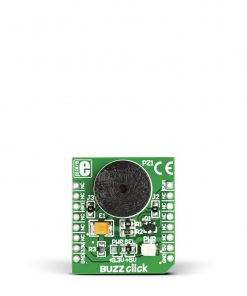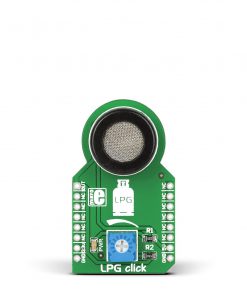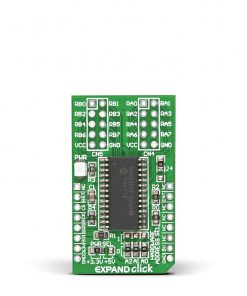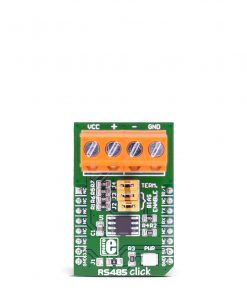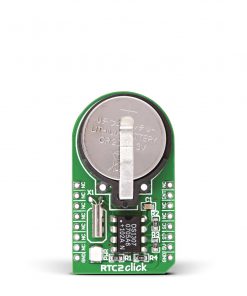6DOF IMU 26 Click
R2,750.00 ex. VAT
6DOF IMU 26 Click is a compact add-on board designed to detect and measure angular rate and linear acceleration across three axes. This board features the SCH16T-K01, a high-performance 6DOF sensor that integrates a 3-axis gyroscope and a 3-axis accelerometer from muRata. The board features a selectable measurement range for both sensors, low-pass filtering from 13Hz to 370Hz, and a 4-wire SPI interface. It also includes the innovative Click Snap design, enabling sensor separation and autonomous operation, with configurable SPI address and data-ready interrupt output. This Click board™ is ideal for inertial navigation systems, robotic motion tracking, machine control, UAV stabilization, and other applications in demanding environments.
6DOF IMU 26 Click is fully compatible with the mikroBUS™ socket and can be used on any host system supporting the mikroBUS™ standard. It comes with the mikroSDK open-source libraries, offering unparalleled flexibility for evaluation and customization. What sets this Click board™ apart is the groundbreaking ClickID feature, enabling your host system to seamlessly and automatically detect and identify this add-on board, alongside a Click Snap feature introducing a new level of flexibility and ease of use.
Stock: Lead-time applicable.
| 5+ | R2,612.50 |
| 10+ | R2,543.75 |
| 15+ | R2,475.00 |
| 20+ | R2,406.25 |

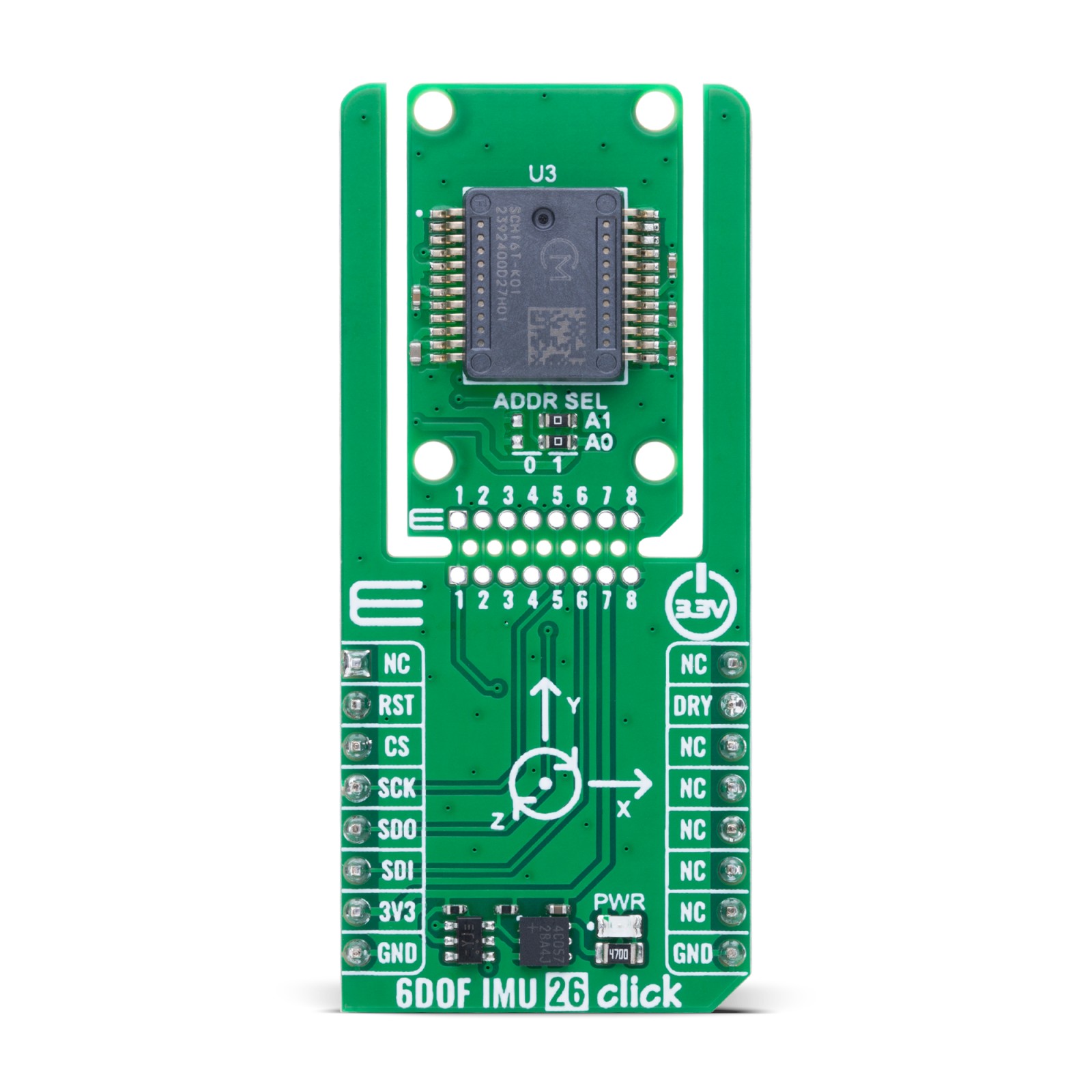
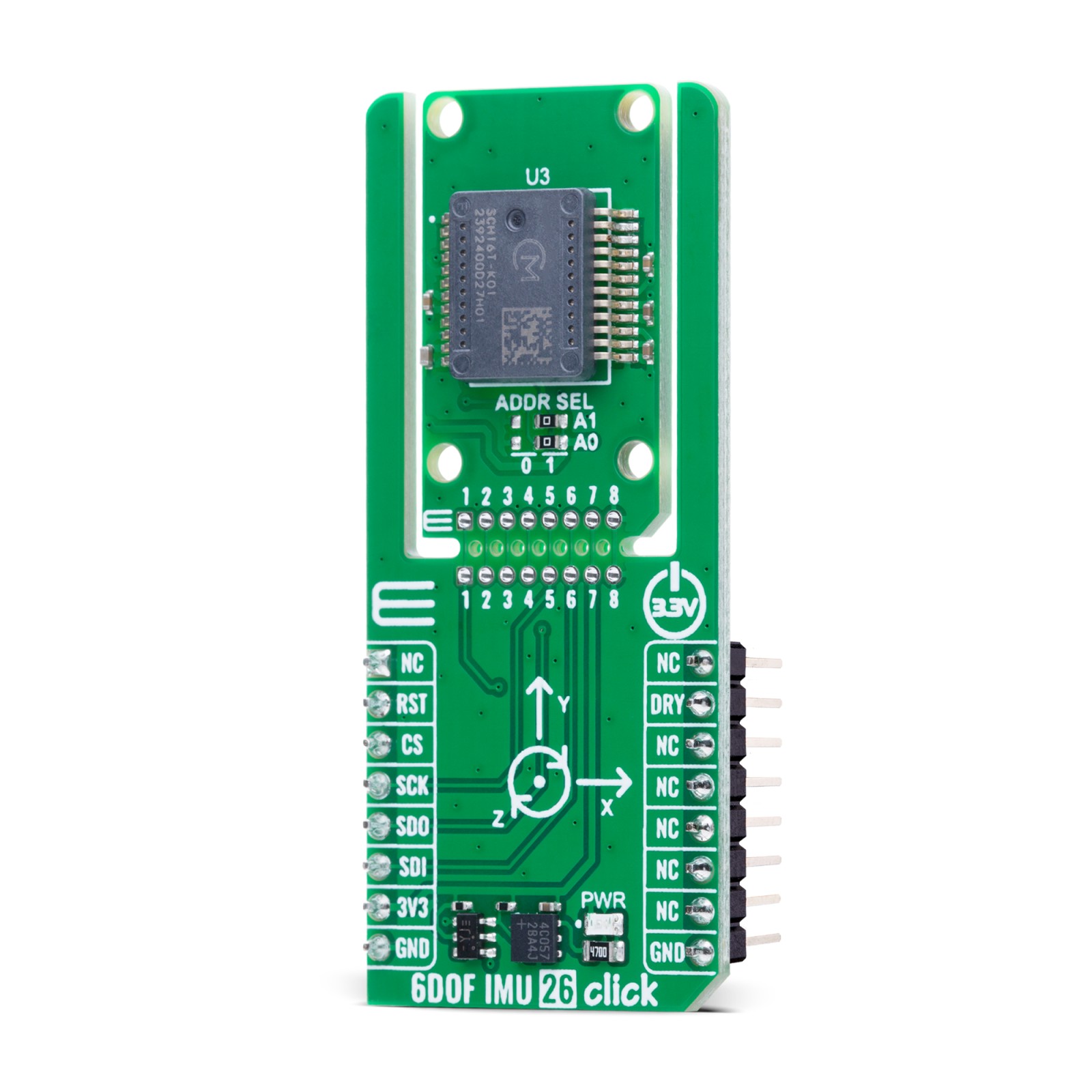

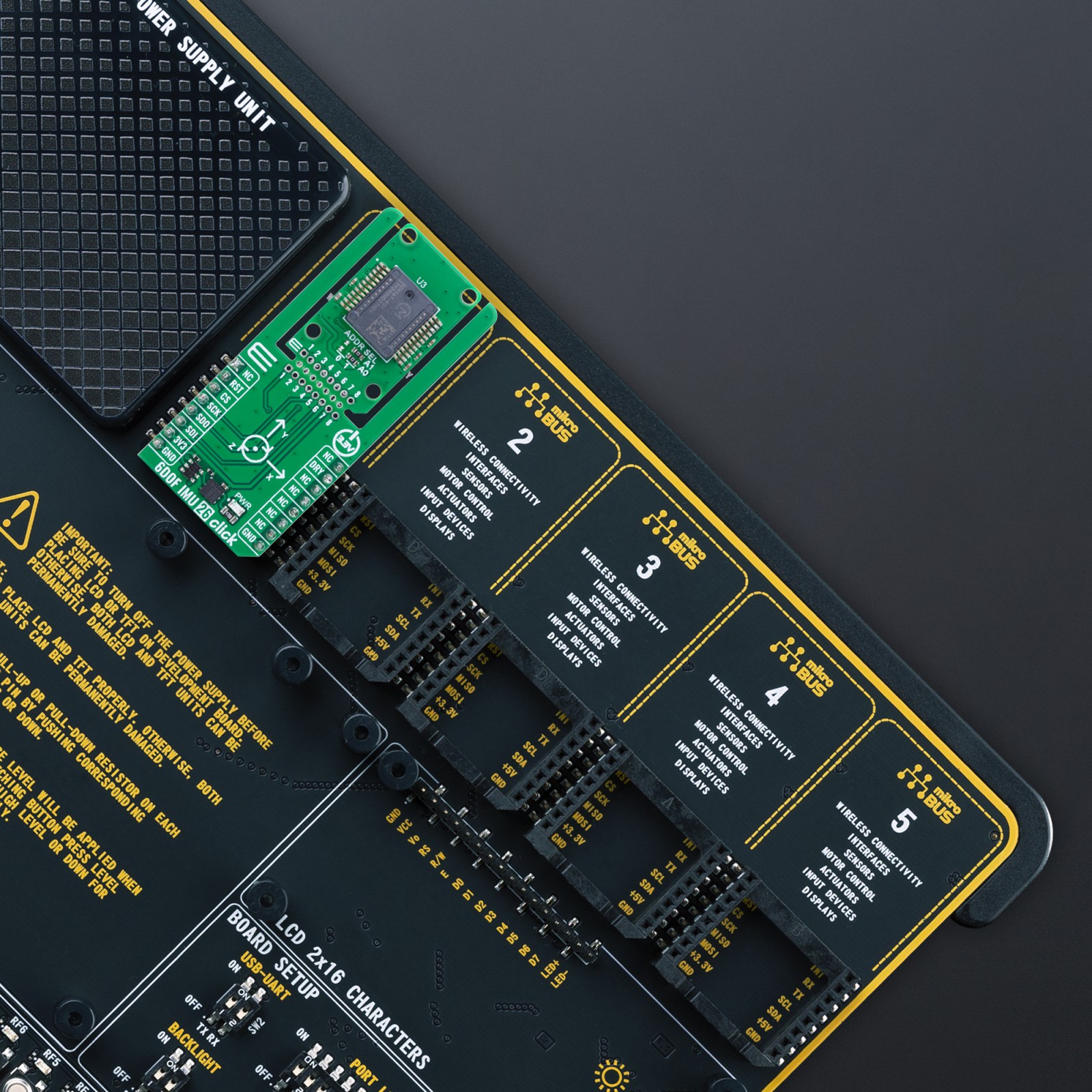

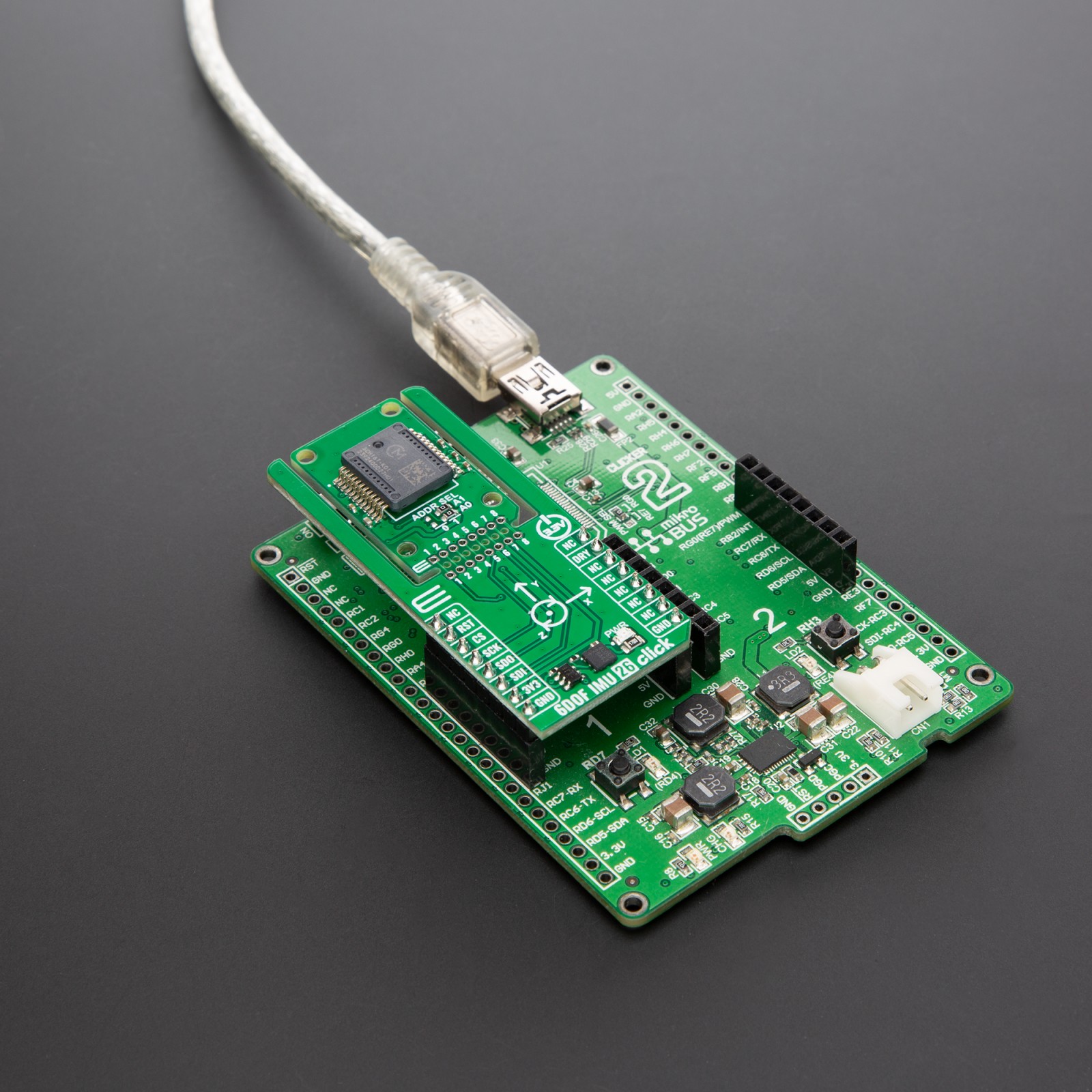
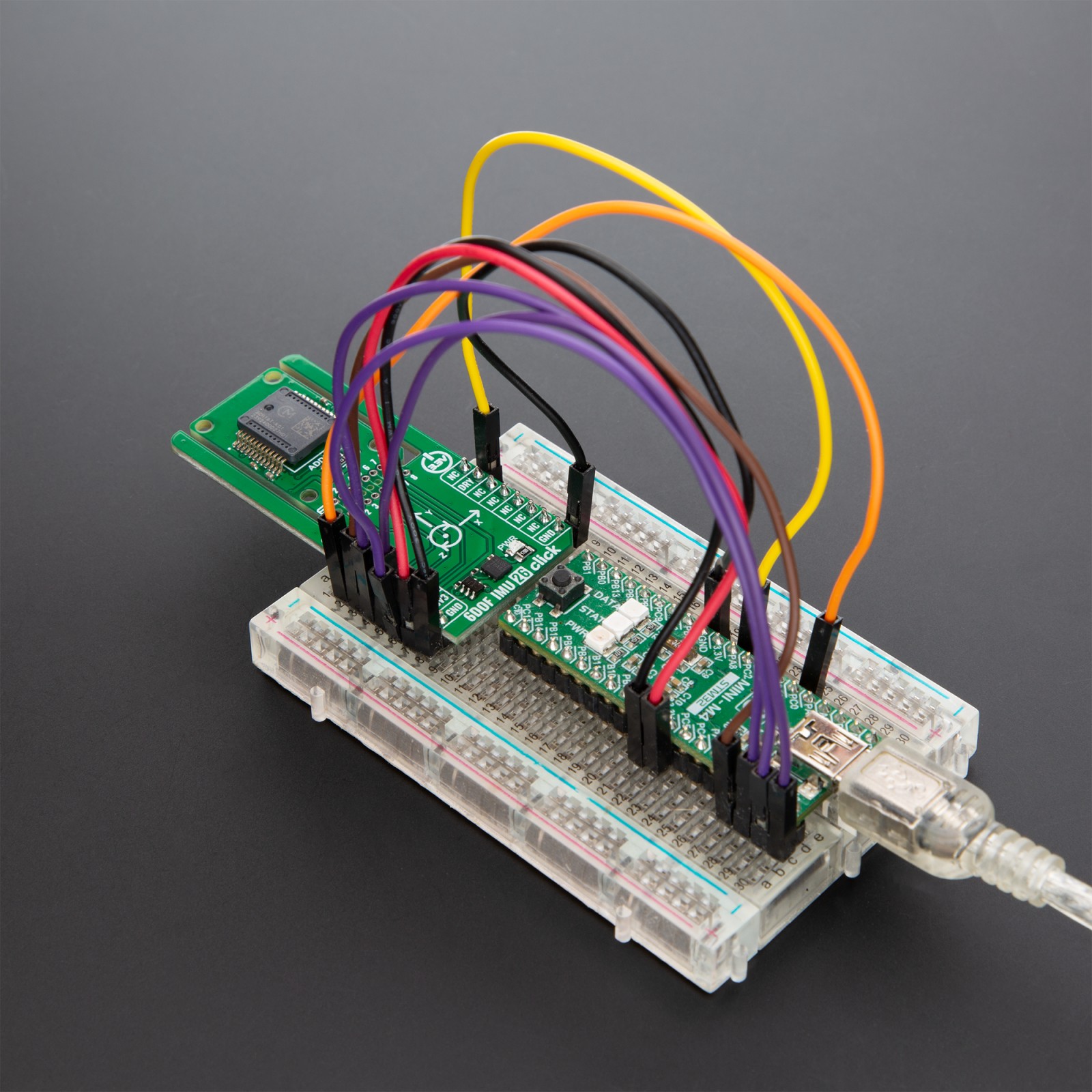


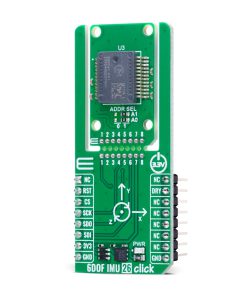
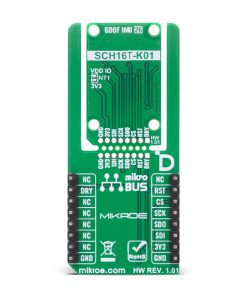
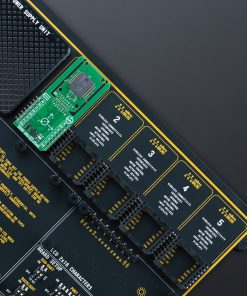
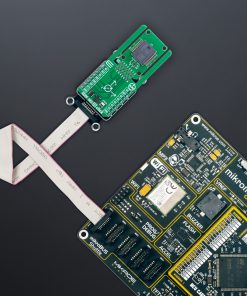

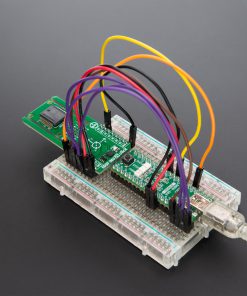
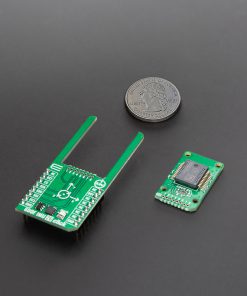
.jpg)

